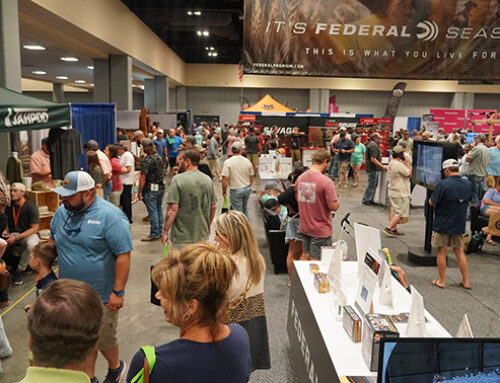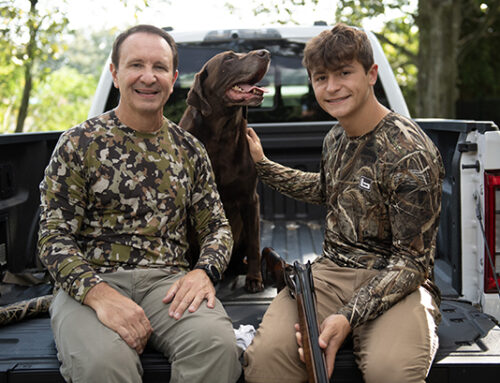2021 Goose Hunting Outlook

Delta Waterfowl forecasts increased numbers of geese this fall
While predictions for the upcoming duck season offer only a few glimmers of optimism, goose hunters are trembling like retriever pups with anticipation for the fall flight. Resident giant Canadas are at new population highs in many places. Analysis of weather data from arctic nesting grounds indicates conditions should have been mostly good for successful light goose, Canada and cackler hatches, meaning more juveniles in the fall flights than last year. Specklebellies likely experienced good nesting conditions as well.
“Temperate breeding Canada geese breeding in southern Canada and the lower 48 United States would’ve been far less affected than ducks by the widespread dry conditions,” said Delta’s waterfowl scientist Dr. Chris Nicolai, a leading goose expert. “And farther north, conditions appear to have been average to excellent for arctic-nesting species like snows, white-fronted geese, cacklers and Canadas, with a few areas that may have low production due to late springs. Overall, the three eastern flyways should see a much stronger fall goose flight than last season while the Pacific Flyway should have another stellar season similar to last year.”
Resident Canadas Rise
All states that conducted breeding spring waterfowl surveys reported near-record, if not record-breaking, numbers of resident giant Canada geese.
Beginning with North Dakota, state game and fish department migratory game bird management supervisor Mike Szymanski says, “Hunters should expect waterfowl hunting to be difficult in North Dakota this year, with the lone bright spot being Canada goose hunting.”
While the state’s wetland index dropped by 80 percent year-over-year, North Dakota’s resident nesting Canada geese are not impacted nearly as much by drought conditions as are its ducks. In fact, North Dakota’s honker breeding numbers are up significantly. The 2021 North Dakota estimate of 379,786 resident Canadas was up 13.3 percent from 2020 and makes it the second highest NDGFD estimate ever. Only the 2018 statewide estimate was a couple thousand birds higher.
In Wisconsin, the 2021 population estimate for Canada geese is 181,430 — up 3 percent from 2020 and a whopping 68 percent above the long-term average. Those numbers are important to Badger State hunters, as it’s estimated more than 60 percent of the Canada geese taken there are resident-breeding birds.
Michigan’s honker numbers are up, too, since 2019 (the last survey conducted). This spring’s count estimates 295,635 breeding birds, which is an increase from 244,208 in 2019 — a 21 percent gain. That puts the Michigan giant Canada population 27 percent above the state’s long-term average and 7.7 percent above the 10-year average. This bodes for great mornings in the blinds for Michigan’s hunters this year, as the majority of the geese they harvest are home-state hatched.
In the Pacific Flyway, this year’s Oregon survey reported 53,795 breeding Canada geese. That’s up 13 percent from 2019 (the last survey completed) and 18 percent from the state’s long-term average. That’s despite drought conditions considered “severe, extreme or exceptional” over the majority of the state.
California appears to be an exception for local Canada goose production this year. Goose banders there reported lower age ratios, suggesting that production may have been impacted by drought conditions. It’s just that dry in the Golden State.
Northern-nesting Geese
For the second year in a row, the Covid pandemic dry-docked nearly all banding programs and on-the-ground population surveys in Canada’s far north. That makes first-hand analysis of arctic-nesting success difficult to come by for Canada-breeding birds.
However, Nicolai polled his deep network of contacts to offer a region-by-region report:
Wrangel Island
This Russian island is the breeding ground of a large snow goose colony contributing primarily to the Pacific Flyway. At last report, due to difficult conditions and helicopters being used for Siberian fires, Russian biologist Vasiliy Baranyuk had not yet been able to get onto the island this year. However, other Russian biologists have relayed that the spring was substantially earlier than normal, suggesting another banner production year for this colony already experiencing unprecedented, exponential growth.
Yukon Delta, Alaska
Goose production from this region primarily benefits the Pacific Flyway. Bryan Daniels of the Yukon Delta National Wildlife Refuge said banding crews reported excellent production of black brant, minima cackling geese and emperors. Emperor goose counts declined, but appear to remain above the number to maintain the recently continued season. Production is expected to be above average for all three of these species, plus the sizable Pacific Flyway white-fronted goose population and Taverner’s cackling geese.
North Slope of Alaska
This area produces good numbers of black brant and Central Flyway white-fronted geese, plus a small number of snow geese. Notably, the Ikpikpuk River Delta colony — which usually has 20,000 snow goose nests — appeared to have been destroyed by brown bears, according to North Slope Borough biologist Brian Person.
Vijay Patil, who works for the U.S. Geological Survey at the Colville River Delta and Teshekpuk Lake areas, reports well above-average production of snow geese and brant. These conditions suggest that production of mid-continent specklebellies (which migrate along the Central and Mississippi Flyways) should also have been strong.
Canadian Arctic Areas
No crews were able to be on the ground on Banks Island, Queen Maud Gulf, Southampton Island or Baffin Island. However, Frank Baldwin from the Canadian Wildlife Service assessed weather patterns across the Canadian Arctic and suggests that summer temperatures seemed to be almost exactly midway between the bust year of 2018 and the boom year of 2019, so perhaps a solid average year occurred for these vast snow goose breeding areas. In addition to snows, these areas are very important to breeding brant, Ross’s geese, cackling geese and mid-continent specklebellies. However, some reports may suggest some weather-related, delayed nesting took place along the west Hudson Bay, which could impact small numbers of snow geese and a good number of mid-continent Canadas and cackling geese.
Ontario
Rod Brook of the Ontario Ministry of Northern Development, Mines, Natural Resources and Forestry provided a report for snows, Canadas and cackling geese breeding in Ontario. These geese primarily winter in the eastern Mississippi Flyway and some northern states in the Atlantic Flyway. He saw quite a bit of variation in productivity, ranging from really good from Akimiski Island to Cape Henrietta Maria, and relatively poor in Southern James Bay. These areas are usually very productive for Canada and cackling geese, and smaller numbers of snow geese.
Quebec and Bylot Island
Josee Lefebvre from the Canadian Wildlife Service provided information for these eastern goose production areas. She says banding crews were on site on Bylot Island — the largest concentration of breeding greater snow geese — but she has not yet heard reports. In northern Quebec, specifically the area where Atlantic Population Canada geese nest, snow and ice were average, with warmer than normal temperatures. Those conditions suggest a solid average production year for this population of geese that is so important to the Atlantic Flyway.
Hope for the Season Ahead
There are enough optimistic reports from the arctic to give goose hunters reason to hope there will be more juvenile birds in the fall flight — and therefore easier geese to decoy — than the widespread bust last season. It’s especially hopeful news from western breeding areas like the Yukon Delta and the Russian Wrangell Island where snow goose numbers simply exploded unlike any other geese last year, and might explode even further this year. Combined with record numbers of temperate-breeding Canadas, that should inspire you to buy a couple dozen more dekes, paint up the old ones and touch up the camo on the layout blinds. Goose season is almost here!
— Bill Miller






Leave A Comment